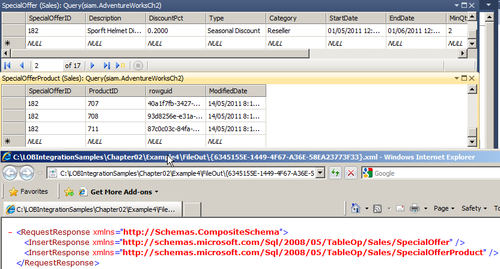Example 4 - Composite Operations
The
purpose of a Composite Operation is to be able to execute multiple
database actions in the context of a single unit of work, or
transaction. Even though we are calling multiple actions we expect all
actions to either succeed or fail as a group. The idea is that if we
need to insert/update multiple tables, we want all inserts/updates to
succeed otherwise we want to rollback the action so that our tables
remain in sync.
Once again we find ourselves in the Consume Adapter Service wizard. There are two tables of particular interest to us: SpecialOffer and SpecialOfferProduct.
The SpecialOfferProduct table links Special Offers and Products
together. We want to perform Insert operations against both of these
tables.
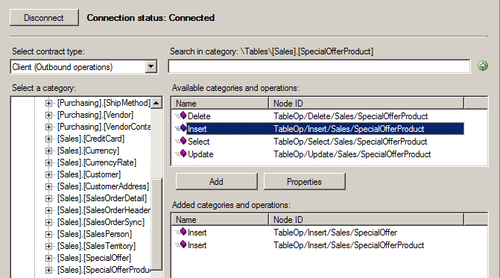
Once the wizard has been
completed, we will discover two schemas of interest to us that model our
Database tables: SpecialOffer.xsd and SpecialOfferProduct.xsd:
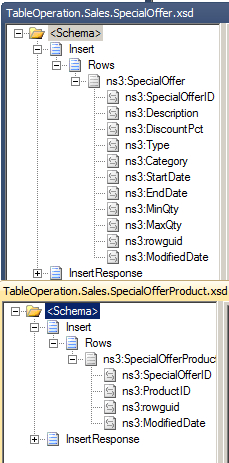
In order to build a
Composite Operation, we need to have a single schema that contains
multiple root nodes. Under the first root node, we add all the operation
execution request schemas, and under the other we add all the operation
response schemas. The only naming convention rule for the root nodes is
that the operations response root node has to be the same as the
operations root node and suffixed with 'Response'. For this example we
have created a schema called CompositeSchema.xsd, and created two root nodes: Request and RequestResponse.
Once we have the root nodes
we use the Import property of BizTalk Server schemas to import the two
update schemas into the composite one:
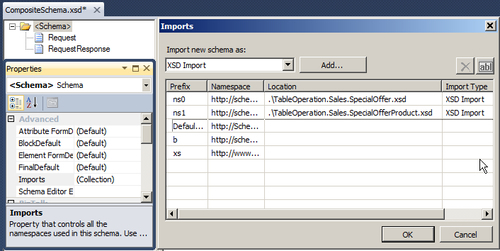
With our schemas imported,
we need to ensure that all parent nodes have the correct Data Structure
Type specified. As you can see in the following image, we have two Insert nodes underneath the Request root node. Within each of these Insert nodes we provide the Data Structure type for our SpecialOffer request and SpecialOfferProduct request. Similarly, we do the same for RequestResponse nodes:
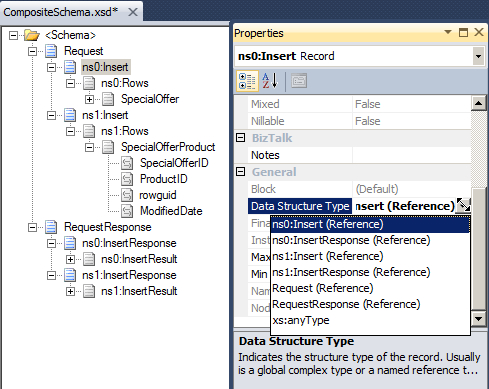
Here is our map that will
demonstrate taking data from a single request and splitting the data
across our multiple request nodes in our composite schema. When this is
run through BizTalk, we will insert data into both our SpecialOffer and SpecialOfferProduct tables as a single transaction:
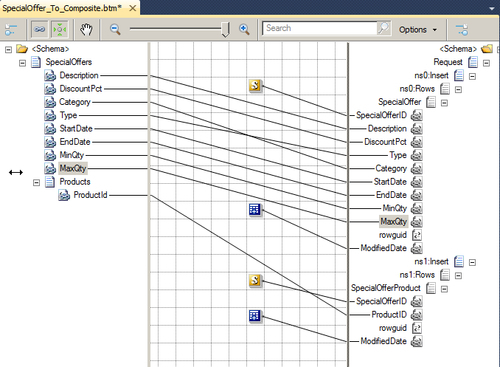
On the solicit response send port that we created for the composite operation we need to use a special Action name called CompositeOperation:
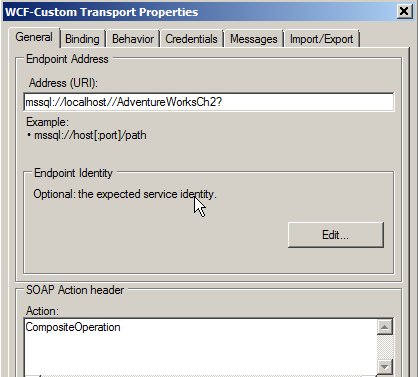
Another adapter property to be aware of is on the Binding tab and is called useAmbientTransaction, which should be set to True.
In conjunction with providing CompositeOperation in our SOAP Action
header, this property instructs the adapter that multiple operations
will be executed and these operations have to be executed as a single
transaction.
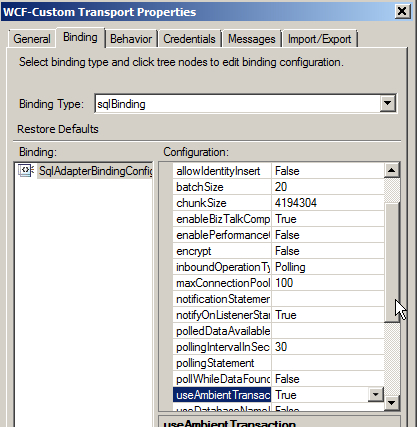
By using a composite operation against the two table updates we have the following benefits:
The same transaction
is used for both operations. This means if there is an exception both
are rolled back. This is important for our solution since we want both
updates to be executed together, and if one of them fails both get
rolled back.
The
same database connection is used. The adapter will use the same
connection from the connection pool for all the update, insert and
delete statements in the composite operation, minimizing the risk of
running out of connections in the pool.
Now with our composite schema
in place and our map to transform our incoming request to the composite
message, we can build out the rest of our solution:
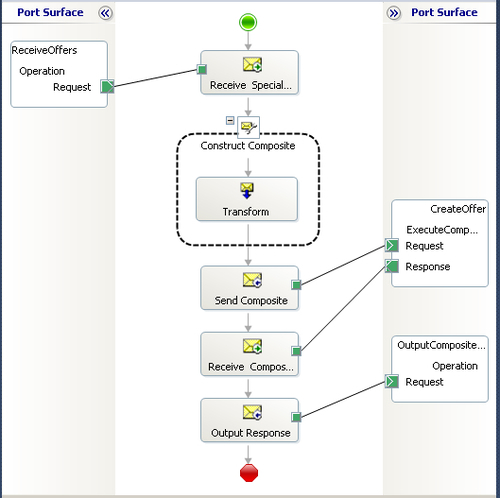
With our application deployed we can initialize this process by copying the …\ Chapter02\Example4\SpecialOffer.xml file and pasting it into the Chapter02\Example4\FileDrop folder.
If we examine our
SpecialOffer and SpecialOfferProduct tables we will discover that we
have the SpecialOfferID of 182 (will likely be different on your system
since the first scripting functoid in the Special_Offer_To_Composite map
generates a random number for SpecialOfferID) in both of these tables
with a similar timestamp. These records were written to this database as
a single transaction. As expected, there were no issues when we ran
this composite operation so there is no data being passed back in the
SQL Server response.
